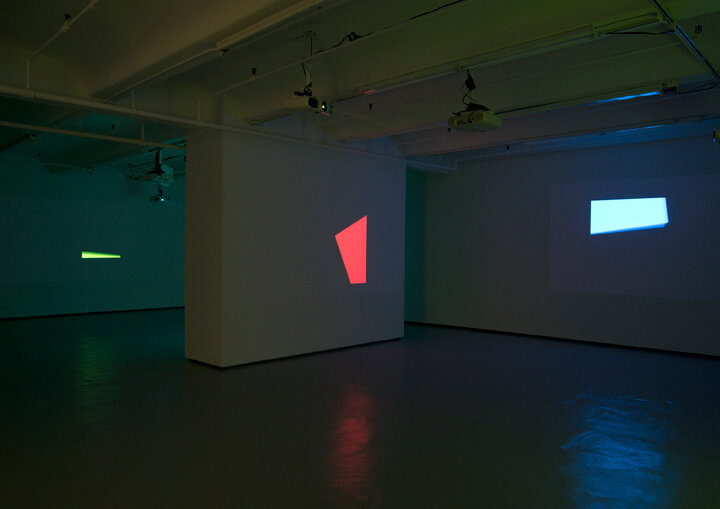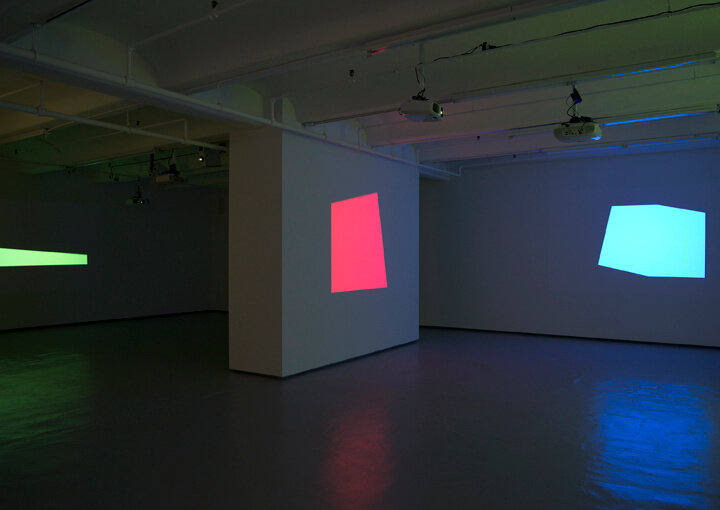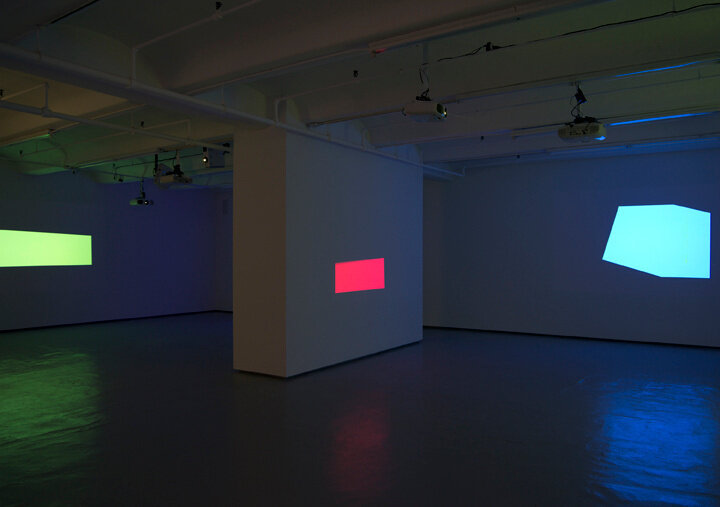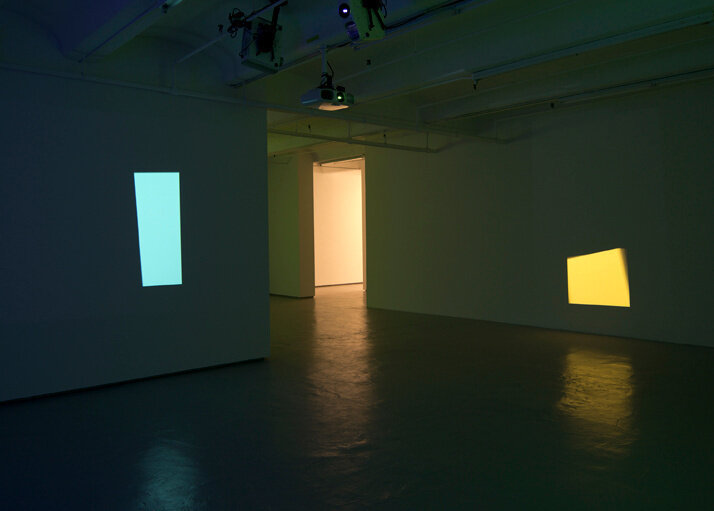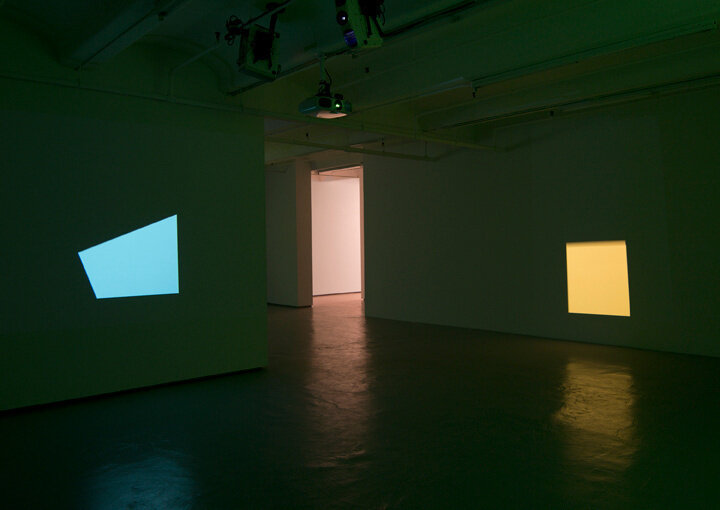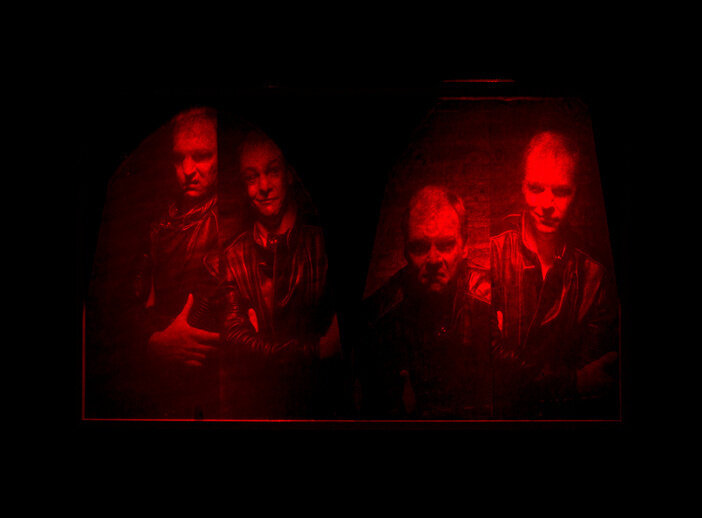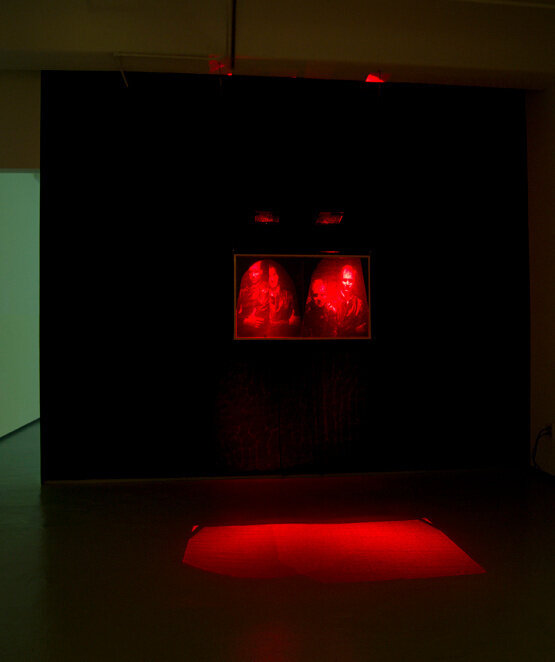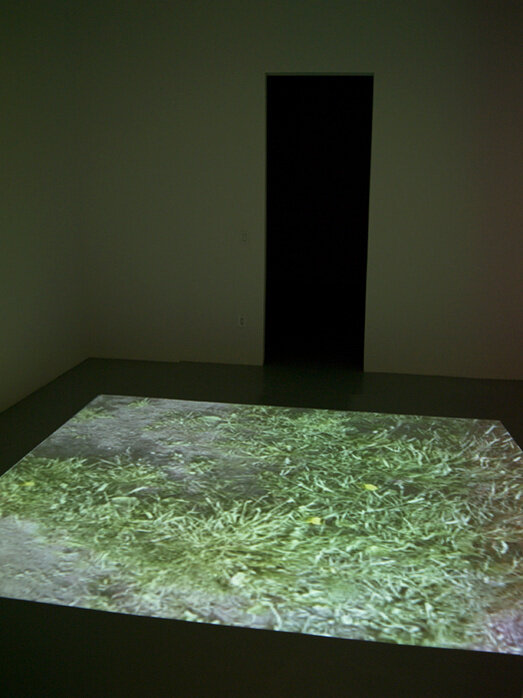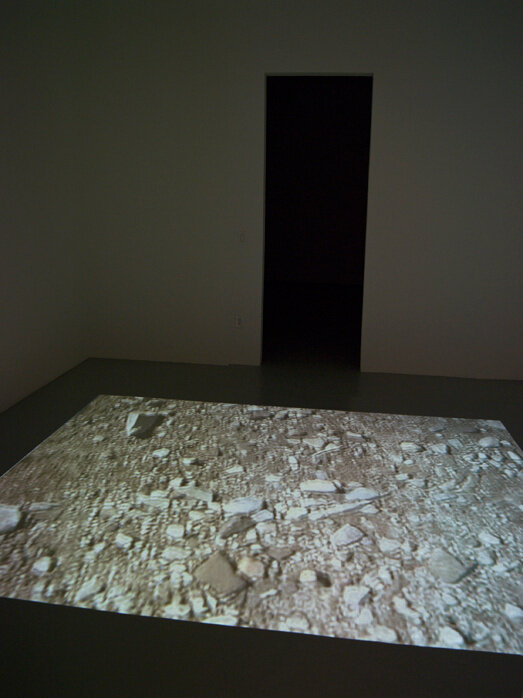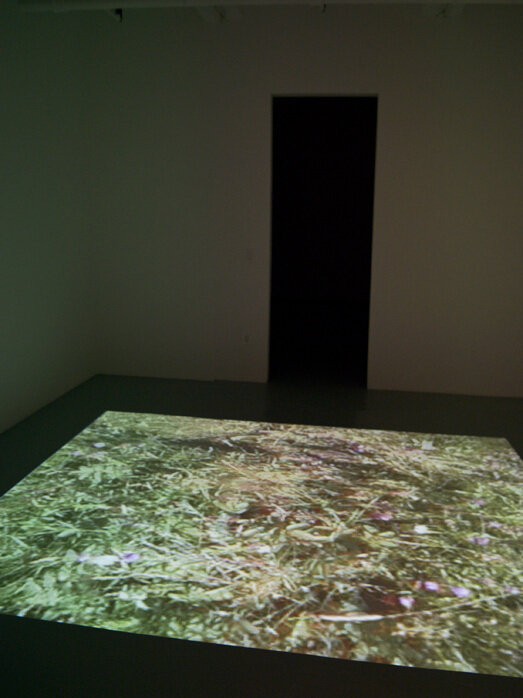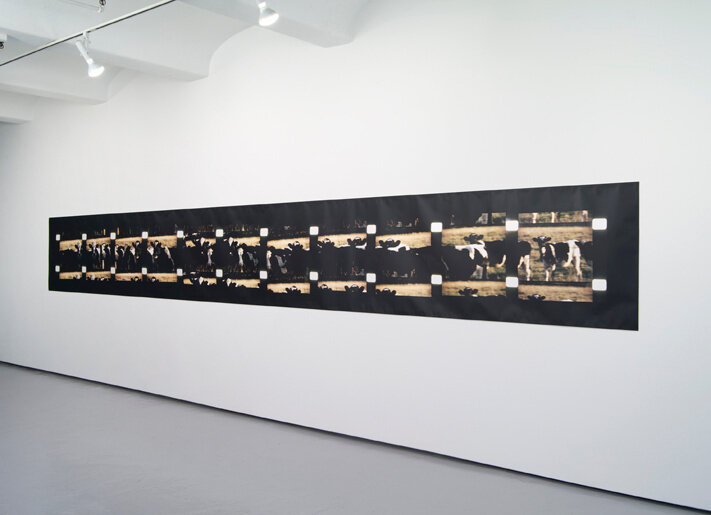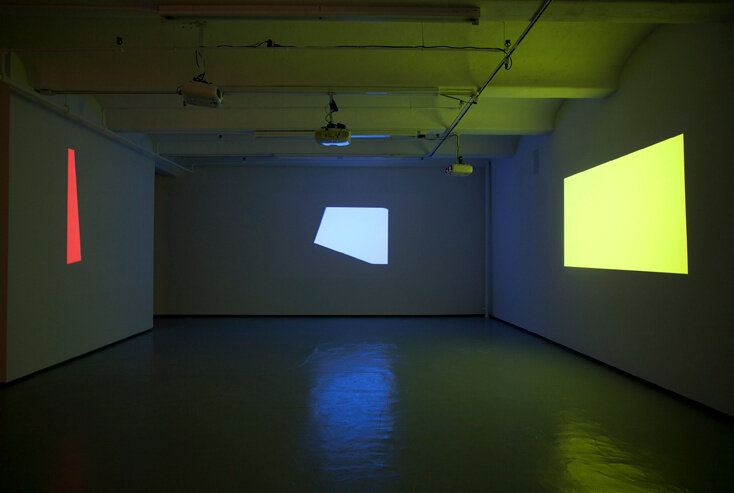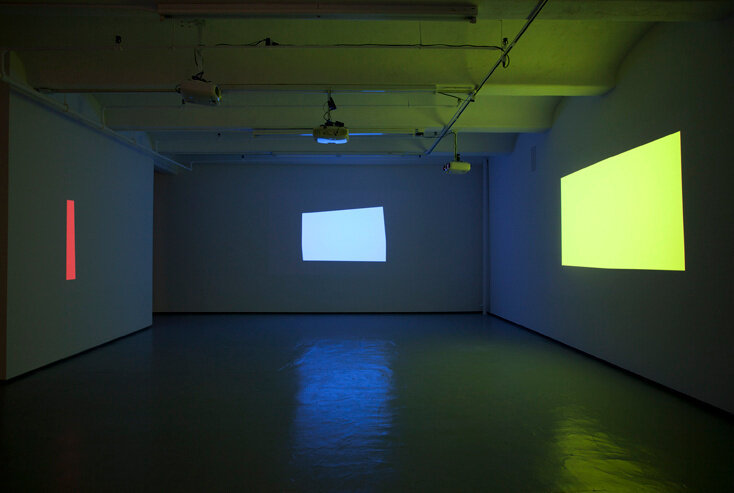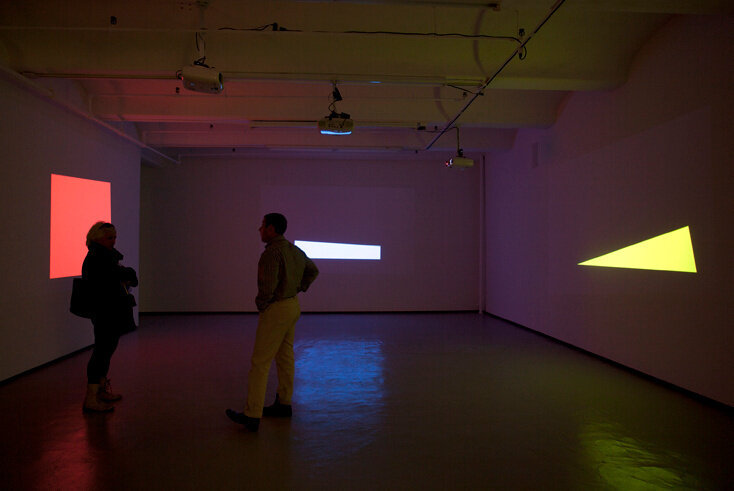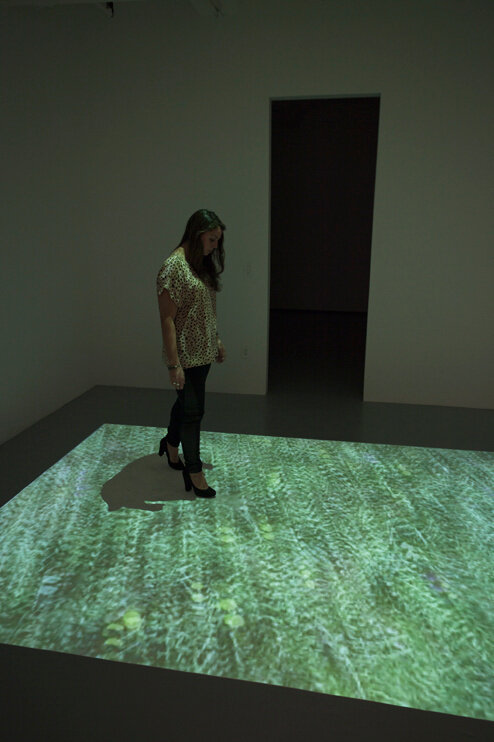In The Way
Press Release
MICHAEL SNOW
In the Way
January 7 – February 11, 2012
Opening reception for the artist: Saturday, January 7, 6-8 pm.
Jack Shainman Gallery is pleased to announce a solo exhibition of new work by Michael Snow. The show will examine the act of looking and the process of viewing though projections, holography and photo-based works.
The Viewing of Six New Works is a new seven-part projection which draws on Snow’s oeuvre to examine the nature of perception and the physical relationship of the artwork to the viewer. The light projections simulate the varying ways a person might look at a rectangular wall-mounted artwork by digitally mimicking and essentializing the movement of the eyes. The gestures of viewing are revealed as the shifting focus of the spectator’s gaze becomes fleetingly tangible and physically manifested through the piece. “The work is an attempt to present only the movements of perception, not perception itself,” explains Snow, “the art of looking at art.”
A second new work, In the Way, is a floor-projection of a trucking pan shot directly above varying terrains of Northern Canada. The work relates to Snow’s seminal La Region Central (1971) and <―> (1969) in its pendulum motion and the use of the cinematic apparatus of both camera and projector as a stand-in for the artist and viewer’s gaze. The work becomes a virtual extension that the observer is able to get ‘in the way of’ by standing in the image and altering the piece. The ambiguity of the illusionary plane, which simultaneously contains and breaches the demarcated space, creates an opposition unsettling the viewer’s own presence.
Additionally, the show will feature earlier works which explore the act of seeing “as framing and containment” and draw out the continuous themes of conceptual play and self-referentiality which permeate Snow’s body of work. Exchange, a hologram from 1985, confronts the observer through a staring spectral face. La Ferme (1998), a photo-based work spanning 23 feet is derived from 16mm film of a pastoral scene whose subject, grazing cows, observes the viewer and blurs the boundary of motion and stillness. Both of these works are a testament to Snow’s ability to use a cross-section of media to investigate the tension between the ‘here’ and ‘there’ through technological displacement.
Michael Snow is a visual artist, filmmaker and musician. He first exhibited in New York in the 1960s and became internationally recognized for pioneering avant-garde cinema with the film Wavelength (1967). His work is represented in private and public collections worldwide including the Museum of Modern Art, New York; the Hirshhorn Museum, Washington, DC; the National Gallery of Canada, Ottawa; the Art Gallery of Ontario, Toronto; Museum Ludwig, Cologne; Centre Georges-Pompidou, Paris, and both the Montréal Museum of Fine Arts and the Musée d'Art Contemporain in Montréal. Michael Snow has represented Canada at the Venice Biennale and is a member of the Order of Canada and a Knight of the Order of Arts and Letters in France.
Snow recently had an exhibition Solo Snow at Le Fresnoy, France curated by Louise Déry. In 2012, he will have solo exhibitions at The Vienna Secession, a sculpture retrospective at the Art Gallery of Ontario and a solo show at the Philadelphia Museum of Art.
Upcoming exhibitions at the gallery include Lyne Lapointe, opening Thursday, February 16, 2012 on view through March 17, 2012.
Gallery hours are Tuesday through Saturday from 10 am to 6 pm. For additional information and photographic material please contact Elisabeth Sann at elisabeth@jackshainman.com.
Notes by Michael Snow
January 2012
La Ferme, 1998
La Ferme (The Farm) was first shown in a solo exhibition at La Ferme du Buisson, a museum in the suburbs of Paris.
The following series of events produced this photo-work: a slow, hand-held pan was
shot on 16mm film, of a group of cows gazing towards the camera from behind a fence.
The successive film frames reading the scanning movement were vertical (one after
another, top to bottom). The film strip was then cut up, and the successive frames put
side by side horizontally, the way the recorded scene was seen through the camera.
The human viewer of the long photograph recapitulates the movement of the camera as it recorded the cows’ possible witnessing of this event - which is now an exchange between the foreign opacity of a cow’s stare and your appraisal.
The Viewing of Six New Works, 2012
The Viewing of Six New Works is a light projection composition derived from the essentialized movements of eyes and head, that a possible person might make in looking at a rectangular object on the wall (i.e., a “painting,” a “photograph”). Each hypothetical wall rectangle is perceived differently. This is shown by the different “personal” gestures involved in the revealing of the rectangle. When attention is not being paid to it the object/rectangle is not there.
The work is an attempt to present only the movements of perception, not perception itself. The art of looking at art.
Exchange, 1985
The title refers to the visual exchange between the real 3-dimensional viewer of the work and the several 'looks" (aimed at "you") by the 3-dimensional illusions of a "viewer" who is depicted in the four collaged holograms.
To fully experience the 3-dimensional effect, the viewer of the hologram should bob and weave a bit in order to look around shapes. A single viewpoint will yield only a single aspect.
The holograms are illuminated by red laser light. This is a pulsed hologram and was made in 1985 at the Laboratoire de l’holographie de Paris. The depicted actor is Michael Sowdon, who at the time was the director of the Toronto holography lab Fringe Research.
In the Way, 2011
“In the Way” can have varied meanings. If something is in the way it is an obstacle. A common use of the word is: “something is in my way,” meaning that “something is impeding my progress.”A way fundamentally describes a path or road, as in the word highway. In another usage one may say “I do something my way,” meaning “my personal method”.
My projection work In the Way urges the spectator to look at the results of a camera moving this “way” or that “way.” It also invites the spectator to stand in the image, in fact to be “in the way” (in the road).
The image consists of constantly panning views shot from directly above at varying speeds, over a very rocky and very muddy road. The road sometimes becomes gradually grassy, so that besides the very rough road images there are also passages looking down on and moving over fields of grasses and flowers. Hard and soft.
In movie terminology, the moving images are described as “trucking shots,” and in fact the images of In the Way were shot from a structure on the back of a truck.
I am interested in the physiological and psychological effects of panning (trucking) images. Seeing the movements of In the Way from above (as they were seen by the camera in real life) will cause new physical and mental experiences in the viewer.
M.S.

